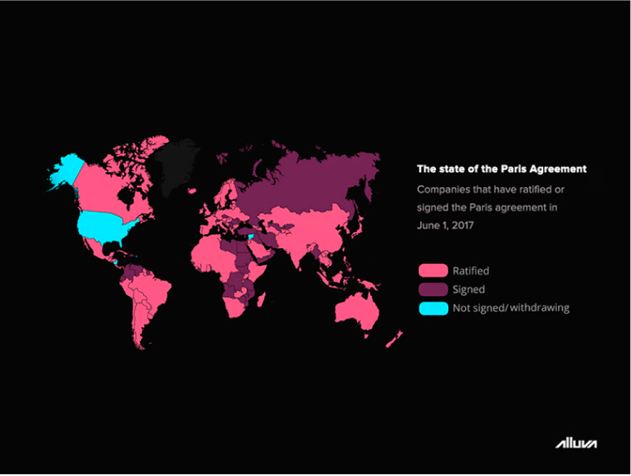Today, global warming is the biggest problem facing the world. We have tried all possible methods to reduce carbon dioxide emissions and climate change but it remains extremely palpable in 2019.
According to the Intergovernmental Panel on Climate Change (IPCC), global temperatures could rise by 2 degrees over the next century, with the potential to change the climate of the climate and the habitat coastal land.
This article will explore blockchain technology in how it is supporting efforts against global climate change and carbon dioxide emissions.
Improving Accountability

The world’s countries signed the Paris Agreement in 2016, it is estimated that a total of 196 countries have signed this agreement. All countries have an agenda to fight against climate change and reduce greenhouse gas emissions. But in 2017, a year after signed the agreement, the British Scientific Journal, nature, reported that no industrialized country reached its target for carbon reduction.
Let us tell you that global warming is a time-sensitive process and there is a need to take immediate action against it, the United Nations and other organizations are opting for cutting-edge technology blockchain and artificial intelligence to reduce greenhouse gas emissions.
Blockchain technology revolutionized the international trade market. It has created a decentralized way to trade carbon credits to protect against climate change. Typically, the ownership of carbon credits gives the company the right to emit one ton of carbon dioxide and most of the companies that are unable to use, especially the smaller ones, they can trade it to other large companies and make a profit., Or save it for future use, this way will help to reduce the use of carbon dioxide.
According to Wikipedia, A carbon credit is a generic term allowing the tradable certificate and permit to representing the right to emit one ton of Carbon Dioxide(CO2) or the mass of another greenhouse gas equivalent to carbon dioxide.
Here are three key terms which clearly define what carbon credits are:
Permission: Ownership of carbon credits allows any country, company or organization to produce a certain number of greenhouse gas emissions that can be traded, if not used.
Trading License: It will issue a certificate that will allow the manufacturer to emit one ton of carbon dioxide (CO2) or its equivalent any gas.
Carbon Offset: It is a financial tool that can be used to reduce carbon emissions and allow its use in the future.
Benefits of Carbon Credits
Individual Benefits: Local investors can also get profits by trading in Carbon Credits.
Buying greenhouse gases: Experts say buying carbon credits remains profitable enterprises. Every company that purchased the carbon credits has a special task to bring down the emissions and provide profitable and environmentally-sustainable alternatives to these emitters.
Business and job opportunities: Trading in carbon credits using the capitalist principle will allow more businesses and job opportunities as it will allow the investors to earn the profits from their purchases and help them in creating an environmentally-sustainable business by reducing the uses of carbon dioxide(CO2). And, due to the new business started up, more job opportunities will arise in the market.
To complete the vision, IBM has signed an agreement with Energy Blockchain lab to build a Blockchain Carbon Assets Trading Center in China. In March 2017, both companies announced together with a blockchain-based green assets management platform which would serve as a marketplace for carbon assets, including credits. The benefits of technology’s strength, Carbon can easily be traced, validated, and traded in a peer-to-peer manner, without the help of any intermediaries or centralization.
Conclusion
In increasing the adverse effect of climate change, we must explore all possible ways to reduce greenhouse gas emissions and pollution. We hope blockchain will play an important role in the fight against global warming in the coming years said “Jame Giancotti, CEO of Alluva.
Also Read: Blockchain – The future is Here

4 Comments